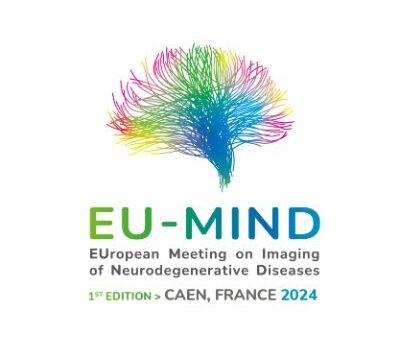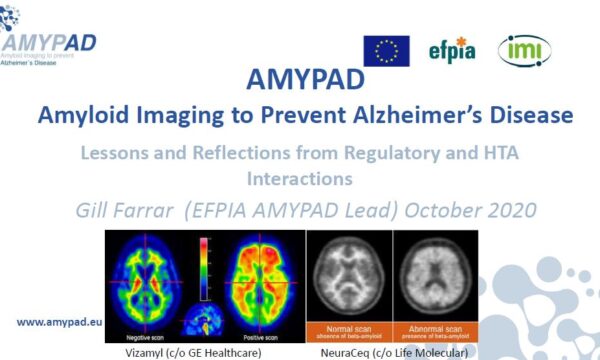One of AMYPAD’s goals is to understand the prognostic value of amyloid-β PET imaging through an improved understanding of the early disease stages (prognostic study). In order to answer this question, either a static or dynamic PET acquisition protocol can be used; the first often preferred in large/ multi-center studies. For diagnostic purposes these static scans are sufficient however, the semi-quantitative parameter derived from this scan is known to be affected by changes in scanning time and cerebral blood flow. Therefore, in a research setting, a dynamic scanning protocol may be required to obtain a higher sensitivity when measuring longitudinal changes in amyloid load (e.g. for monitoring disease progression or treatment response).
Given the aim of AMYPAD’s prognostic study, it seems crucial to provide a highly accurate measure of amyloid load through a dynamic acquisition protocol. The downside of such a protocol is its long duration (110 minutes), resulting in lower patient comfort and less efficient scanner and tracer batch usage. An alternative to the aforementioned protocols would be a dual-time-window protocol, in which PET data of the early and late phases are acquired separately. Such a protocol acquires information regarding tracer uptake as well as tracer binding and creates a resting period in between scans. In addition, the dual-time-window protocol may allow for interleaved scanning, which would optimize tracer batch and scanner usage.
Our recently published paper: “Optimized dual-time-window protocols for quantitative [18F]flutemetamol and [18F]florbetaben PET studies” defined the most optimal dual-time-window scanning protocol, by means of a simulation study, for the two amyloid tracers used within AMYPAD. More specifically, the goal was to maximize the resting period (break) and minimize quantification bias. To this end, we simulated time-activity curves (TACs) based on clinical PET data received from GE Healthcare and Life Molecular Imaging and removed data points corresponding to the break of different dual-time-window protocols. These TACs were fitted using the simplified reference tissue model to estimate the binding potential (BPND, measure of amyloid load). To define the most optimal protocol, two outcome measures were calculated: number of outliers and bias introduced by the break.
Our results indicated that especially the largest two breaks (early scanning phase of 0-10 and 0-20 minutes post injection (p.i.) and a late phase of 90-110 minutes (p.i.)) resulted in an excessive number of outliers and unacceptable bias. Consequently, a dual-time-window protocol of 0-30 and 90-110 minutes p.i. was defined as most optimal protocol, as it allows for accurate amyloid estimation and additionally enables interleaved scanning protocols.
Fiona Heeman
![Optimized dual-time-window protocols for quantitative [18F]flutemetamol and [18F]florbetaben PET studies](https://amypad.eu/wp-content/uploads/2019/05/Picture1.jpg)


